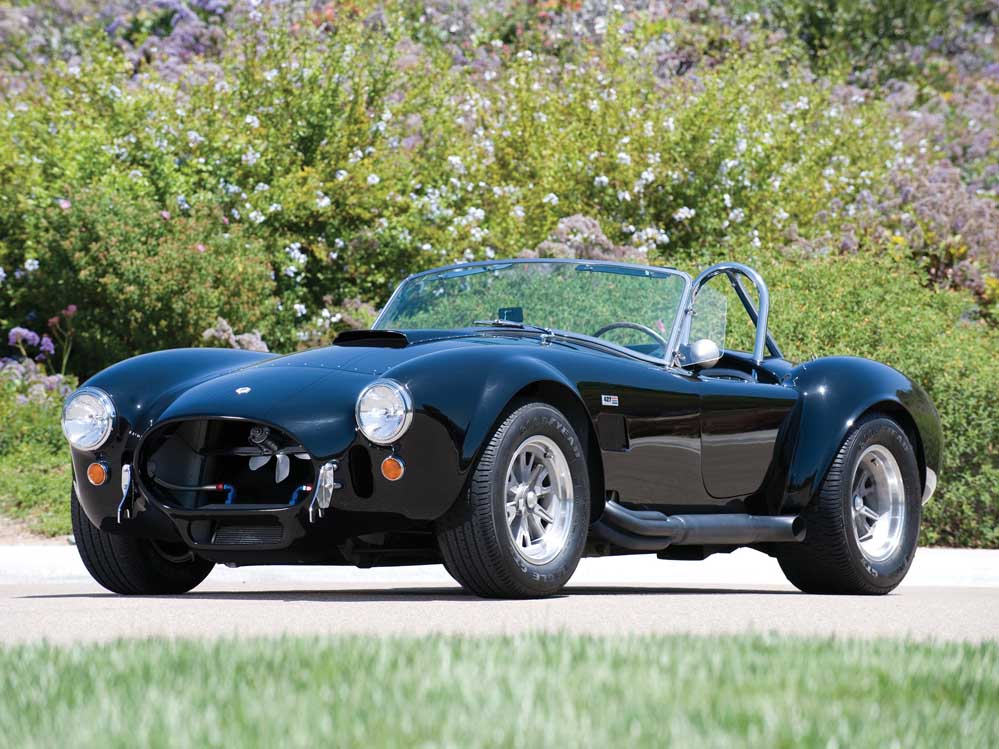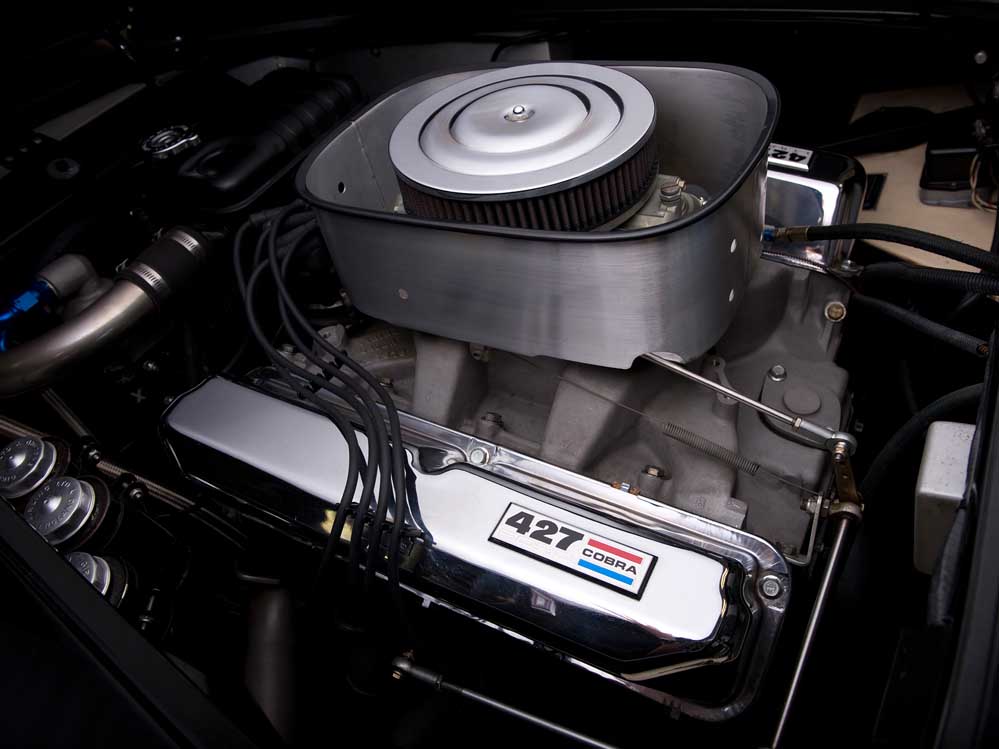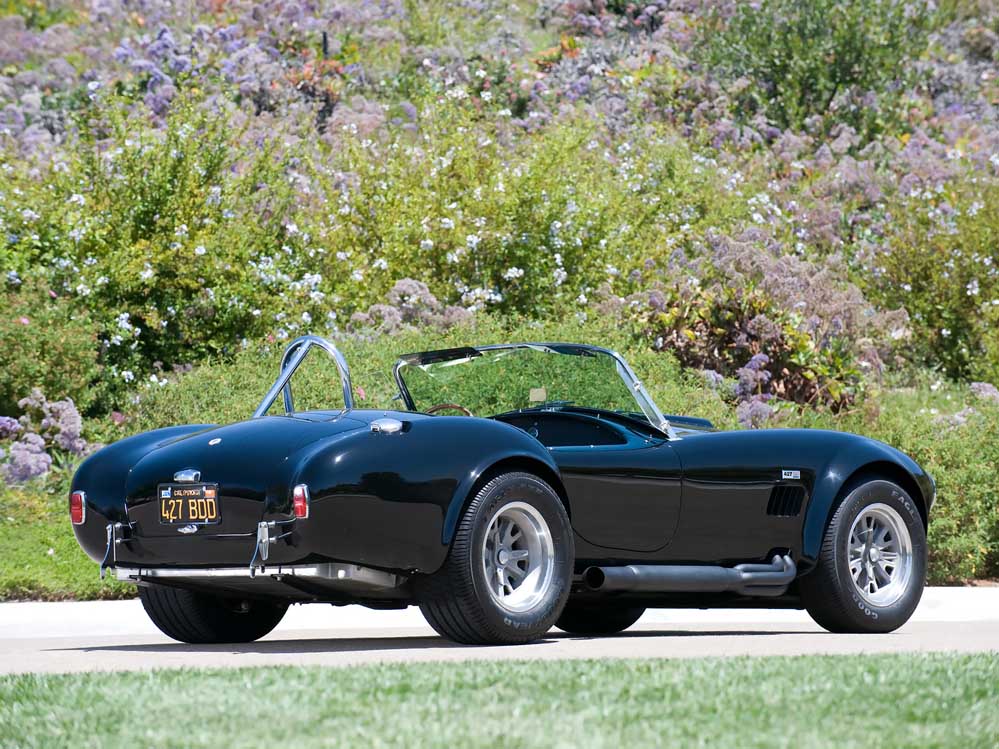"The Shelby badge isn't all about the Mustang and the Cobra. Here are five lesser known cars from the stable of the cowboy himself. [gallery link="file" ids="37733,37734,37735"] 1968 Shelby EXP500 CSS 'Black Hornet' Mustang Known for his penchant for the "

Killer Cobra: Shelby and the Snake
Words: Charles Bamber
If you had been an American MG owner in the early to mid sixties, you would have been pretty smug and self satisfied with your exotic, excitingly nippy little English runabout.
But imagine the day you first heard about the advert of the 427 Cobra. The English built frame now had 427 cubic inch engine (that’s 7 litres) and Road and Track magazine reckoned it could accelerate from zero to sixty in less than four seconds and from zero to 100MPH and back to zero again in less than 14.
The word humiliation wouldn’t even have nearly covered it.

Thing was, that platonic ideal of an MG owner had been punching above its weight on the twisties and rutted orange grove roads of Southern California. The underpowered 356 Porsches were no match for the MG’s handling and the other competitor – the 286 Cobra was regularly outrun. The archaic leaf suspension on the early Cobras, you see, meant that the 300 horses it was able to transmit to the rear tyres were hardly ever translated into manageable power. But with the 427, not only had the small block 286 been replaced by a bloodcurdling, NASCAR-developed engine that produced close to 500HP – it also came with an all-new all-round independent suspension system with anti dive and anti-squat characteristics. Your little English sports car is, in short, instantly outmoded.

In 1965 the violent sort of changes in velocity pioneered by the third iteration of the Cobra would have been hard to come by on the race track. But this was street legal. Things in the world of American sports cars would never be the same again.
But despite its half century old reputation as a killer beast — at low speeds the Cobra 427 could still be a pussycat. Read the road tests of the day and you’ll be surprised to be told that the 11.5 inch Ford clutch was found to be no more challenging than a normal domestic unit. The production 427’s transmission was a standard Ford four-speed synchro box – so it was smooth and relatively easy to handle too.

But it was when you buried the throttle and let the snake free that the 427 Cobra earned its reparation as a widow maker. The MK3 Cobra featured the flared arches that first appeared on the earlier racing versions of the 289. It also came with a genius aesthetic touch in the form of those black painted knock-off magnesium wheels from Halibrand. The 427 would notoriously break traction in the up-shift and even in fourth gear lead foots over 100 MPH. That power-to-weight ratio was so astronomic, slewing of the rear end under heavy throttle was standard. You needed phat rims and serious rubber to take the battering. So though even a learner driver could have toddled round in the beast safely enough, you wouldn’t have let your 17 year old push it over 2000 revs.

The imperatives of success at the 24 Hours of Le Mans can be blamed for the factory Cobra’s premature demise. By 1966 the Ford establishment had been determined to challenge Ferrari’s dominance in endurance racing – and they famously set Carroll Shelby and his team the challenge to produce an endurance racer that could become that Ferrari slayer. Even with its beautiful power and a stretched drive ratio, the format of the Cobra meant that it would only be good for around 170 MPH – and success at La Sarthe meant the ability to crack 200. Enter, of course the GT40.

But it’s the simple, purposeful format of the Cobra that accounts for its enduring appeal. Look at it. It’s squat, to the point. Front and rear over hangs are short, and the roadster setup and the long accommodating bonnet meant that the driving experience is classic as well as adrenalin-inducing. It’s low slung and rather wide, too – and it’s no surprise that the only things that come close to the sort of power induced rattle and hum experienced by the man in the cockpit are the more brutally appointed TVRs.
The straightforward format of the Cobra – and the fact that only a couple of hundred original 427s were ever built – mean that throughout the subsequent decades a large cottage industry has developed in producing continuation cars, replicas and assimilations of the car’s stripped down simplicity.
Original versions of these cars are now regularly fetching 7 figures at auction. Incredible when you consider the rather crude componentry of which they are composed. Never mind.
There’s always that Outlaw MGB.
- Five point harnesses might be more desirable
- Long, low -427 logo proud
- NASCAR developed behemoth
- Flared arches – the toughest ’65er on the streets
- That vulnerable rear end…
- Brit-American collab in extremis…
CLICK TO ENLARGE















